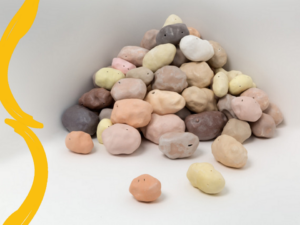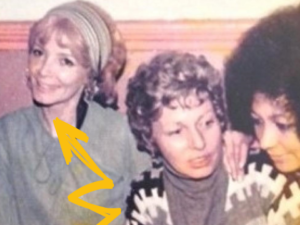
Liverpool is awash with unpicking its postcolonial narratives.
In 2019 we reported, after dialogue with Limerick archivist Liam Hogan, that the far- and alt-right were using Irish indentured servitude as an argument to white-wash the Black enslaved experience. As we target anti-racist narratives and question our practices, further work on the Irish Famine in Liverpool is uncovering emotive stories, as well as lives and quotes that link abolitionists and activists; times and tides. In this melting pot of research, we were approached by Pascal O’Loughlin -an Irish man living in Wirral- about a project he wanted to mount, involving Cherry Smyth.
Cherry has written and performed a deep piece of poetry about the Irish Famine and particularly on the poorest of the poor; challenging perceptions, platforming voices have been lost and contextualising the Irish experience in a way we had not seen before. Now, with Pascal’s help we bring you Cherry’s work.
Famished
People often ask writers where they got their inspiration for a book. I grew up in Ireland, looking at the ruined cottages on windswept hillsides, wondering about when their inhabitants left and why. There was a nagging feeling of not knowing enough, followed by and a strange sense of companionship with these earlier emigrants when I myself left Ireland, forty years ago, for education and work in England. I grew up knowing that the pre-Famine population of Ireland of 8.5 million has never yet been fully recovered and some part of me felt uncomfortable with being yet another one to pack my bags and continue this tragic pattern.
Modern parallels/lessons in history
But there were two more distinct triggers for writing Famished, a book-length poem about the Irish potato famine; the biggest refugee crisis of the nineteenth century, and the role of British Imperialism in the deaths of nearly two-million people and exile of two-million more. Firstly, in 2012 I noticed a poster on the tube for an exhibition about the life of Queen Victoria with a portrait of her face. Across the forehead, someone had scratched ‘Irish Famine’. I immediately felt the thrill of kinship and wondered “what exactly was Queen Victoria’s response to the Famine?” and why didn’t I know?
I dismissed the idea of researching more; it seemed emotionally overwhelming. I did nothing for several more years, but ideas that are meant to be written often act away beneath the surface. When I saw footage of thousands of migrants crossing the Mediterranean, I realised that if the Famine happened now, the boats would probably not be allowed to land on English shores. I was troubled by how little I knew about the Coffin Ships and so I ordered several books about the Irish Famine and booked a flight to visit the Famine Museum in Roscommon. It was time not to ignore the creative pulse any longer.
Research
Writers have to be their own researchers. You never know what seemingly small fact will hook a story or poem and bloom into the thread that sews the narrative of the book together. One of the items in the Famine Museum that stuck with me was an inventory taken by a priest in Donegal to show how little people had in order to raise donations from charities. The Famine started suddenly and brutally in 1845; this inventory was from 1837. It emphasised the deep poverty that already existed in peoples’ lives when starvation and disease struck.
The Parish Inventory, Gweedore, pre-Famine, 1837
A schoolteacher found
what little
they had amongst them,
some 4,000 people,
to persuade charity be given:
1 cart, 1 plough, 20 shovels,
32 rakes, 7 table forks,
93 chairs, 243 stools, 2 feather beds,
8 chaff beds, 3 turkeys, 27 geese, 3 watches,
no looking glass above 3d in price,
no bonnet, no clock. (4)
That’s one shovel among two hundred people.
They ate with their fingers. Had no shoes.
Rose and slept by the sun’s path.
Silence
Later, I returned to this list when I was considering my ancestors and how they survived. There is a certain silence around the horrific facts of the Famine and even though there have been commemorative bronze statues erected in many cities, statues can’t speak. I wanted to try and voice some of the shame of being a descendent of survivors and the items on the list made this tangible and concrete.
I am born of those who ate, who made,
who sold and bought and ate. And lived.
And lived. And stayed. Did they own a cart,
a plough, a shovel, a rake, table forks, chairs,
stools, feather beds, a looking glass, a bonnet,
a clock? Did they hoard or share?
Speaking the silence
When I finished the book, I knew that it needed to be spoken in public to challenge the legacy of silence and tradition of ‘don’t mention it’. I wanted to create a collective space for lament and mourning that couldn’t take place in Ireland at the time.
No tune can reach beyond this end,
the bone pit, the sheugh
you would not let a pig die in.
There is an energy
required for loss,
for singing loss,
for losing,
that too much grief
does utterly consume.
Famished: a performance
After the Famine there was much less women’s keening; music and other culture suffered from the great absence and sorrow that haunted the land. Part of my response was to answer that absence. I decided to collaborate with an Irish composer and vocalist to develop a performance that would go on to tour England and Ireland. Ed Bennett brought eerie field recordings of the sea and the wind to Lauren Kinsella’s extraordinary vocal improvisations that some people described as ‘the blight talking to itself.’ With Liverpool’s deep connection to Ireland and the Famine, it is a very fitting that the performance of Famished has been invited to this year’s festival.
Famished, Cherry Smyth, is available from Pindrop Press. Famished will be presented as part of a dual presentation with Jaki McCarrick, at Liverpool Everyman Bistro on Tue 25 Oct 2022.


